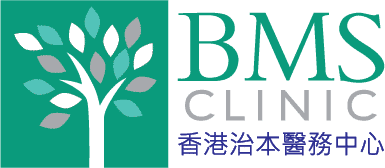How to Relieve Shortness of Breath in Lung Cancer Patients:
Practical and Safe Daily Management Strategies
Shortness of breath (dyspnea) is one of the most common and distressing symptoms for lung cancer patients, whether during active treatment or recovery. It may present as breathlessness, chest tightness, wheezing, or feeling exhausted after minimal exertion. These symptoms can stem from tumor compression, lung tissue damage, treatment side effects (radiation pneumonitis, chemotherapy-induced fibrosis), pleural effusion, anemia, or anxiety. The following evidence-based techniques are safe for most patients and can significantly reduce breathing discomfort.
Immediate Techniques for Acute Breathlessness
- Pursed-Lip Breathing + Diaphragmatic Breathing When you suddenly feel unable to catch your breath:
- Relax your shoulders, inhale slowly through your nose for a count of 2 (let your belly expand)
- Exhale through pursed lips (as if blowing out a candle) for a count of 4
- Repeat 4–6 times — relief is often felt within 30 seconds This is the first-line technique recommended by the Global Lung Cancer Coalition and thoracic societies worldwide.
- Forward-Leaning Postures
- While sitting: rest both hands on your thighs and lean slightly forward
- While standing: support your hands on a table or wall and lean forward These positions reduce the work of breathing by 30–50% by relaxing accessory muscles.
- Cool Air on the Face (Handheld Fan Technique) Directing cool air toward the face stimulates the trigeminal nerve and reflexively calms the brain’s respiratory drive. Many patients keep a small USB fan by the bedside or carry one when out — the effect is rapid and surprisingly powerful.
Five Evidence-Based Daily Strategies to Improve Breathing Long-Term
- Regular Pulmonary Rehabilitation Exercises (Most Important)
- Incentive spirometry or respiratory muscle trainers (start at 1000 ml, progress to 2000–3000 ml)
- Singing, playing harmonica, or wind instruments (fun ways patients actually stick with)
- Tai Chi, Qigong, or Baduanjin (especially movements focused on breath regulation)
- Optimal Indoor Environment
- Maintain indoor humidity at 50–60% (too dry irritates airways)
- Use HEPA air purifiers to reduce PM2.5 and allergens
- Avoid cooking fumes, perfume, incense, and strong essential oils
- Postural Drainage and Percussion If sputum retention is contributing, family members can learn simple postural drainage positions (based on tumor location) combined with gentle chest percussion to clear secretions.
- Nutrition and Anemia Correction Hemoglobin below 10 g/dL markedly worsens dyspnea.
- Increase iron-rich foods: red meat, liver, red dates, spinach (pair with vitamin C for absorption)
- Physician-prescribed iron supplements or erythropoietin injections when needed
- Anxiety Management Over 40% of perceived breathlessness has an anxiety component.
- Daily 10-minute mindfulness or breath-focused meditation
- Progressive muscle relaxation
- Short-acting anxiolytics (if nighttime panic attacks occur) under medical guidance
Red-Flag Symptoms — Seek Immediate Medical Attention
- Sudden worsening of shortness of breath unrelieved by rest or techniques
- Blue lips or fingernails (cyanosis)
- Inability to speak in full sentences
- Associated chest pain, hemoptysis, or palpitations
- Sudden leg swelling (possible pulmonary embolism)
Summary and Encouragement
Shortness of breath can feel overwhelming, but with pursed-lip breathing, forward-leaning postures, consistent pulmonary rehabilitation, environmental optimization, and targeted nutrition, most lung cancer patients can move from “breathless all day” to “occasional breathlessness with good daily function.” Every conscious deep breath is an investment in reclaiming your lung capacity and your life.
You are not fighting this alone. Our dedicated respiratory therapy team, oncologists, and nursing staff walk with you every step of the way, helping you regain comfortable, confident breathing. At our clinic, we firmly believe: when breathing becomes easier, hope becomes stronger. Together, we will help you breathe freely and live fully again. You’ve got this!
Disclaimer:
The information provided in this article is for educational and informational purposes only. It is not intended to diagnose, treat, cure, or prevent any disease, nor should it replace professional medical advice. Readers are encouraged to consult with a qualified healthcare provider or integrative oncology specialist before making any changes to their diet, treatment plan, or lifestyle based on the content herein. Therapies and tests mentioned, including immune or integrative treatments, should always be…
All product names, test references, and therapy mentions are for informational context only and do not constitute endorsement. Results and experiences may vary among individuals.
